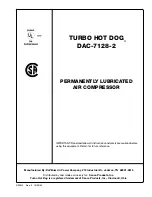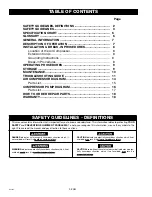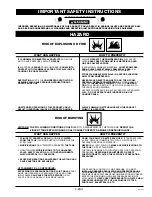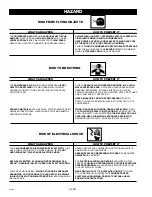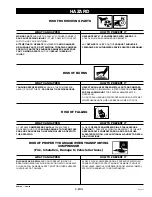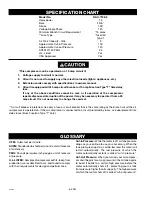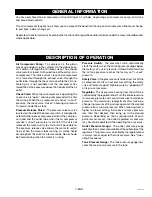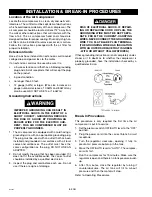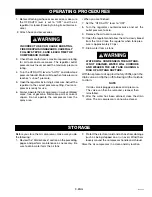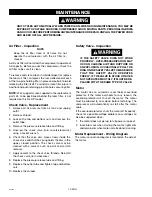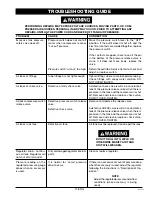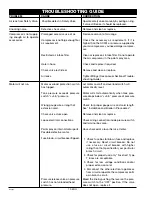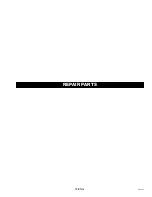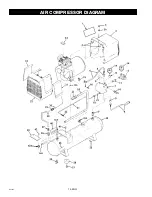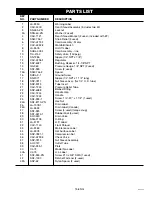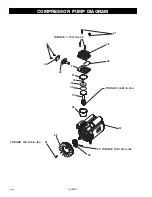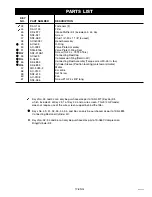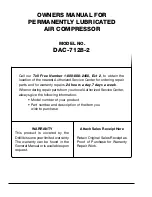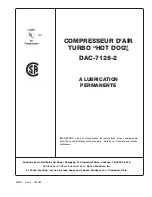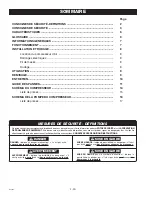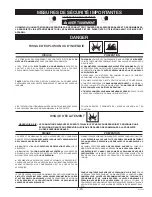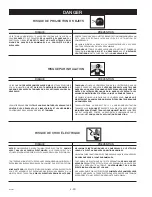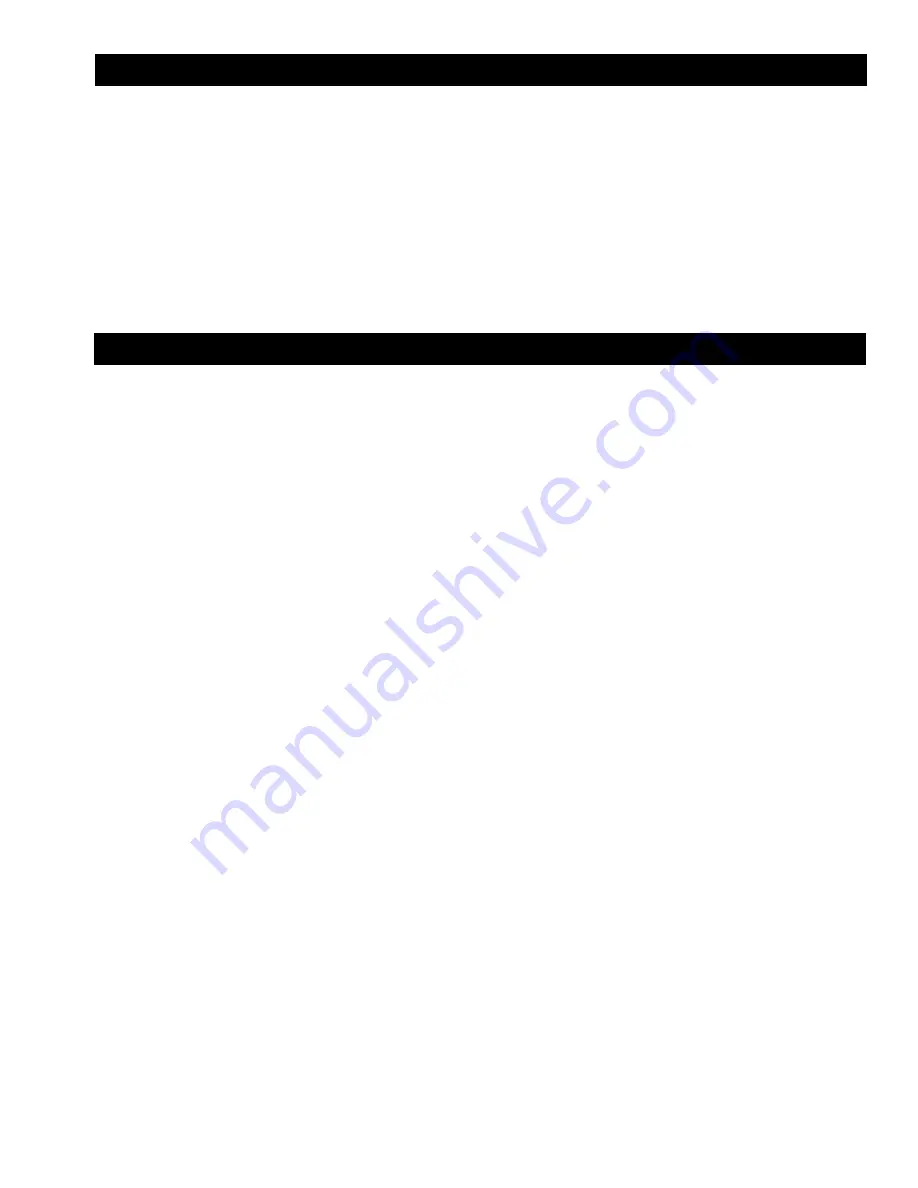
7-ENG
D22235
Air Compressor Pump:
To compress air, the piston
moves up and down in the cylinder. On the downstroke,
air is drawn in through the air intake valves. The exhaust
valve remains closed. On the upstroke of the piston, air is
compressed. The intake valves close and compressed
air is forced out through the exhaust valve, through the
outlet tube, through the check valve and into the air tank.
Working air is not available until the compressor has
raised the air tank pressure above that required at the air
outlet.
Check Valve:
When the air compressor is operating, the
check valve is "open", allowing compressed air to enter
the air tank. When the air compressor reaches "cut-out"
pressure, the check valve "closes", allowing air pressure
to remain inside the air tank.
Pressure Release Valve:
The pressure release valve
located on the side of the pressure switch, is designed to
automatically release compressed air from the compres-
sor head and the outlet tube when the air compressor
reaches "cut-out" pressure or is shut off. If the air is not
released, the motor will try to start but will be unable to.
The pressure release valve allows the motor to restart
freely. When the motor stops running, air will be heard
escaping from the valve for a few seconds. No air should
be heard leaking when the motor is running.
Pressure Switch:
The pressure switch automatically
starts the motor when the air tank pressure drops below
the factory set "cut-in" pressure. It stops the motor when
the air tank pressure reaches the factory set "cut-out"
pressure.
Safety Valve:
If the pressure switch does not shut off the
air compressor at its cut-out pressure setting, the safety
valve will protect against high pressure by "popping off"
at its pre-set pressure.
Regulator:
The air pressure coming from the air tank is
controlled by the regulator knob. Turn the knob clockwise
to increase pressure and counterclockwise to decrease
pressure. To avoid minor readjustment after making a
change in pressure setting, always approach the desired
pressure from a lower pressure. When reducing from a
higher to a lower setting, first reduce to some pressure
less than that desired, then bring up to the desired
pressure. Depending on the air requirements of each
particular accessory, the outlet regulated air pressure
may have to be adjusted while operating the accessory.
Outlet Pressure Gauge:
The outlet pressure gauge
indicates the air pressure available at the outlet side of the
regulator. This pressure is controlled by the regulator and
is always less or equal to the tank pressure. See "Oper-
ating Procedures."
Tank Pressure Gauge:
The tank pressure gauge indi-
cates the reserve air pressure in the tank.
You have purchased an air compressor unit consisting of a 1 cylinder, single-stage air compressor pump, an air tank
and associated controls.
This air compressor requires no oil. Now you can enjoy all the benefits of having an air compressor without ever having
to purchase, add or change oil.
Separate air transformers which combine the functions of air regulation and/or moisture and dirt removal should be used
where applicable.
GENERAL INFORMATION
DESCRIPTION OF OPERATION
Содержание TURBO HOT DOG DAC-7128-2
Страница 13: ...13 ENG D22235 REPAIR PARTS...
Страница 14: ...14 ENG D22235 AIR COMPRESSOR DIAGRAM...
Страница 31: ...13 FR D22235 LISTE DE PI CES...
Страница 32: ...14 FR D22235 SCH MA DU COMPRESSEUR...

